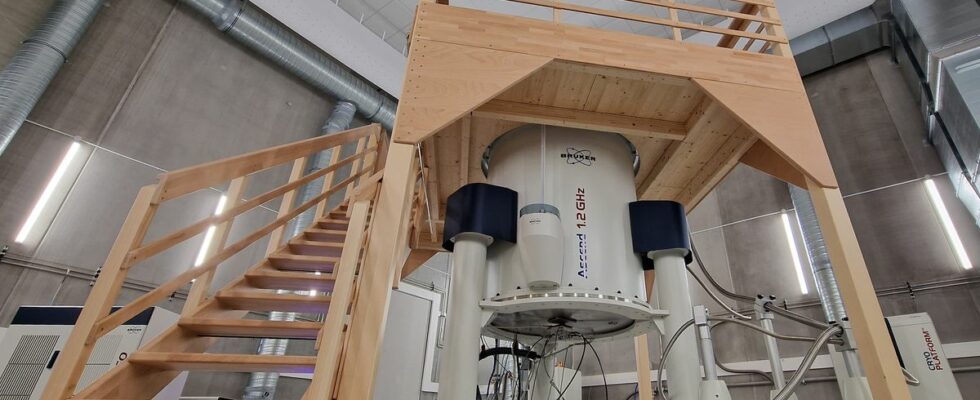Unravel the secrets of matter. Most people go into ecstasy when they are offered a nice bike, a jewel or a PS5. Scientists from the CNRS and the University of Lille are like kids in front of a big magnet. Well, we have to admit that it’s not just any magnet and that they’ve been waiting for their new toy, the 1,200 MHz NMR spectrometer, for more than ten years. It’s big, expensive and complicated, of course, but the applications should bring significant advances in many areas such as health or knowledge of materials.
Let’s stay in our place, there is no question here of embarking on highly scientific explanations of the operation of the nuclear magnetic resonance (NMR) spectrometer officially inaugurated on Wednesday on the campus of the University of Lille, in Villeneuve d ‘Asq. To put it simply, it works on the same principle as an MRI, a device used in particular in medicine. The atomic nuclei making up the sample placed in the device revolve around a very intense magnetic field generated by a large magnet. NMR measures the frequency of rotation of these nuclei, making it possible to characterize the environment of the atoms and to determine the structure of the molecule that they compose.
Search inert or biological materials
What changes compared to then powerful NMRs? “With its magnetic field 600,000 times greater than that of the earth, the device makes it possible to study increasingly complex materials in increasingly small quantities”, explains Olivier Lafon, scientific manager of the RMN 1,200 project. “Thanks to its very high resolution, we will now have certainties when we sometimes had to settle for hypotheses,” adds Dominique Massiot, president of the scientific council of Infranalytics, the CNRS research federation.
But concretely, will these ten years of development and these millions of euros of investment change your life? “Observing more precisely the environment of atoms in materials or in biological molecules should allow us to propose solutions to various environmental, energy or health issues”, insists Olivier Lafon. In the field of materials, for example, developing biodegradable plastics, materials for batteries and solar panels. In the field of health, advance in the treatment of age-related diseases, such as Alzheimer’s, chronic diseases and bacterial or viral infections. The equipment will also be open to manufacturers, for a fee, because it is necessary to make this big beast profitable, which still consumes 2,500 liters of helium per year.

